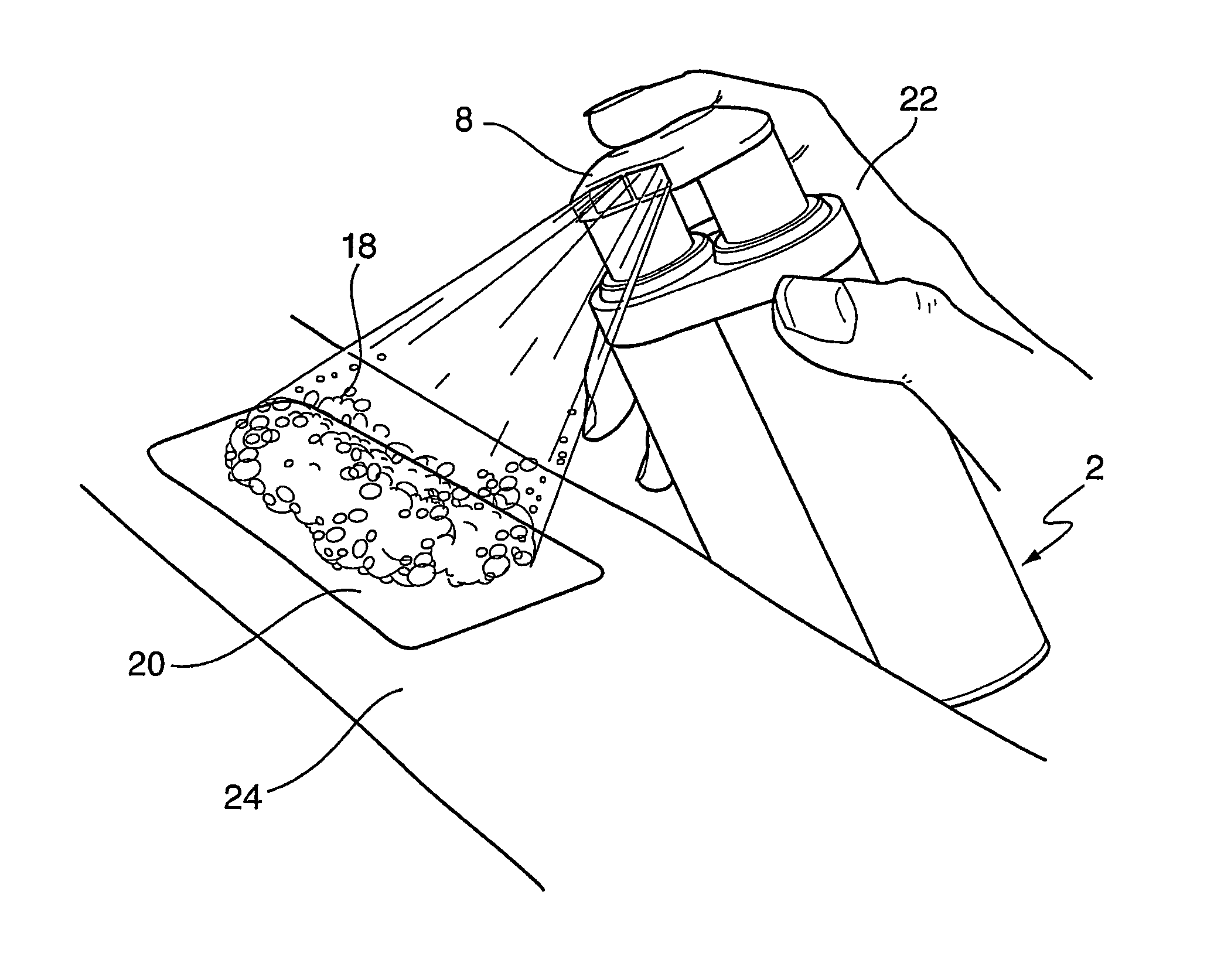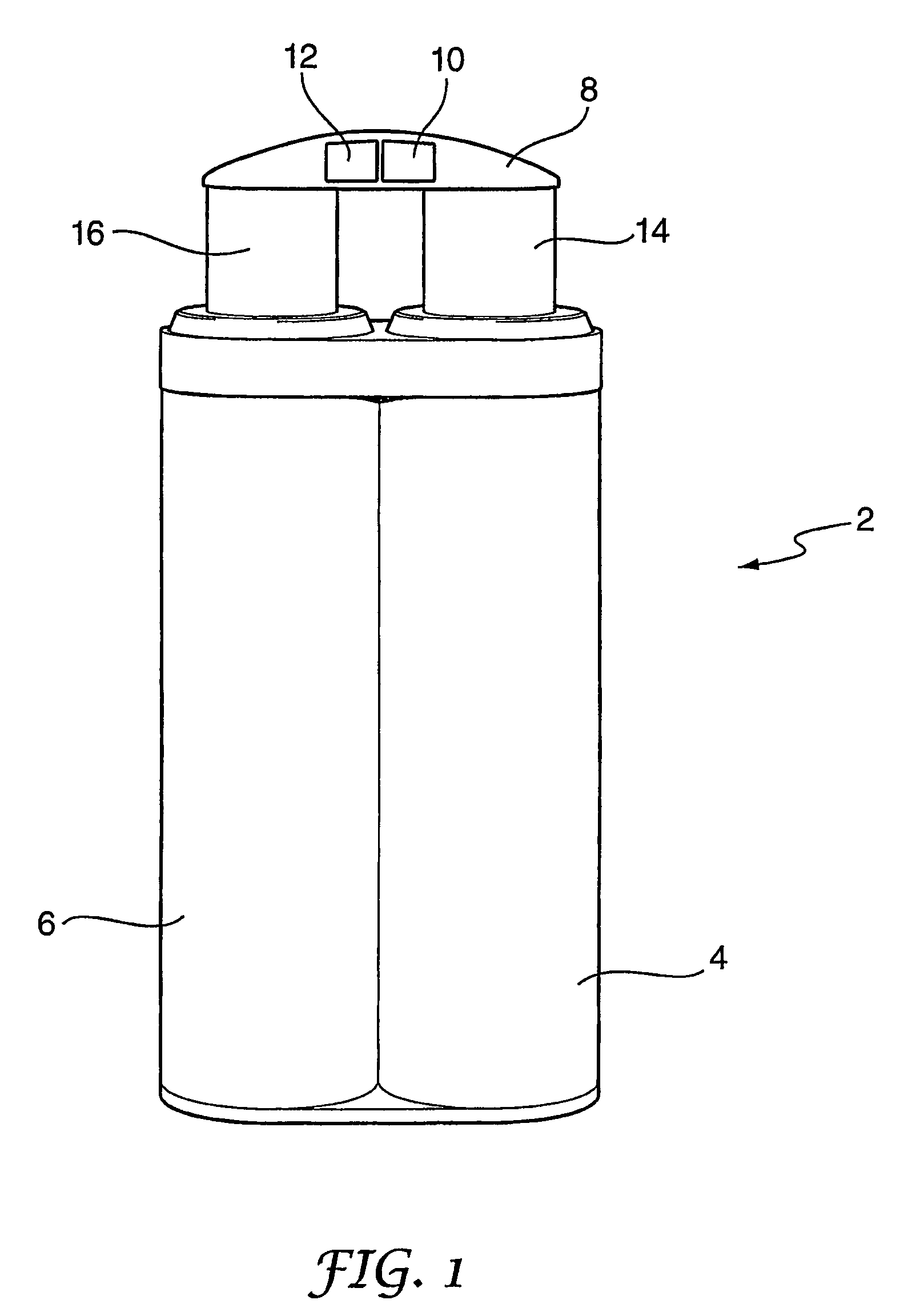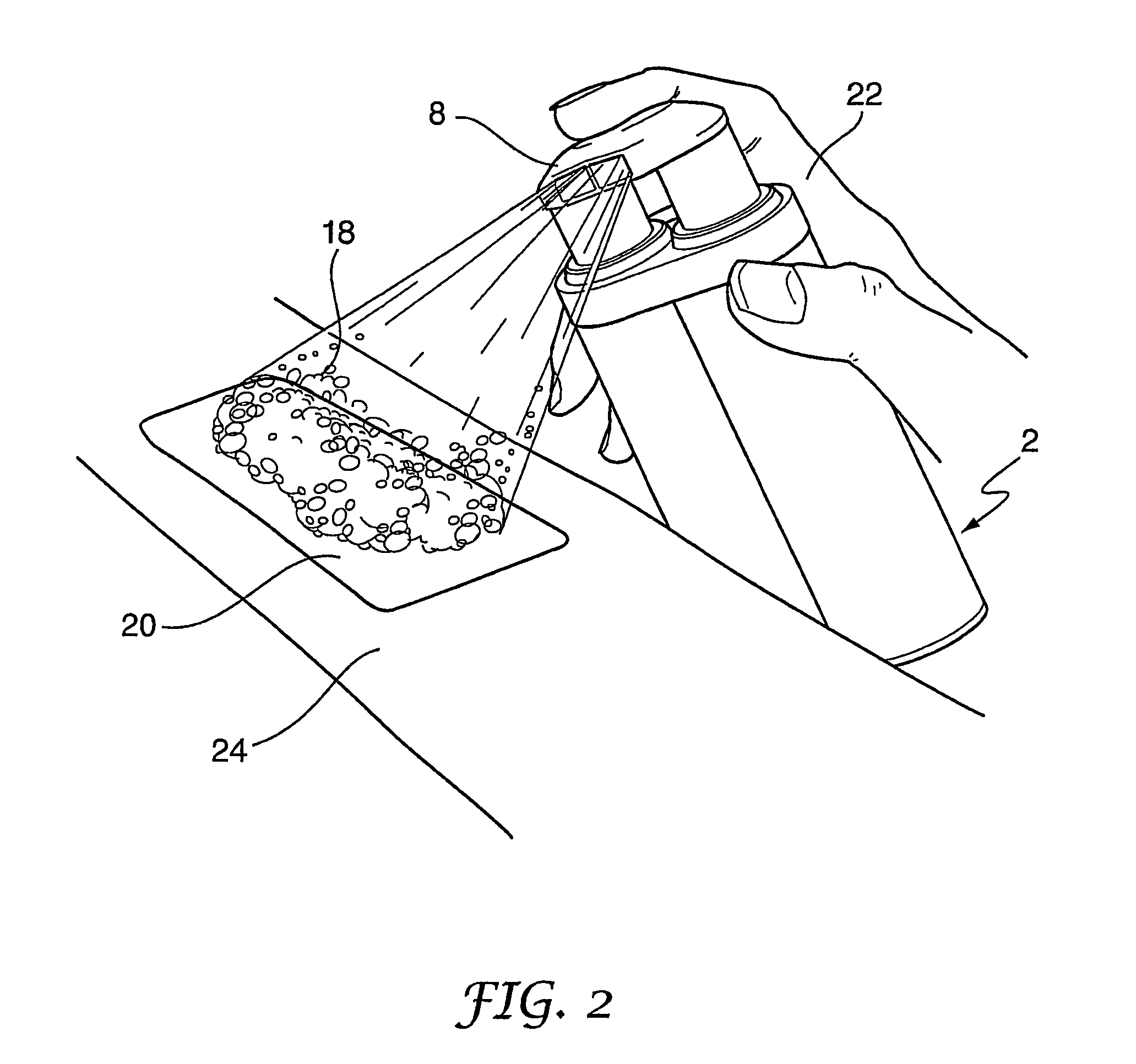Sterilant system
a sterilization system and system technology, applied in the direction of liquid transfer devices, instruments, volume meters, etc., can solve the problems of not being as effective as chlorine dioxide and not always convenient to mix up batches of solutions, and achieve the effect of stable compound
- Summary
- Abstract
- Description
- Claims
- Application Information
AI Technical Summary
Benefits of technology
Problems solved by technology
Method used
Image
Examples
Embodiment Construction
[0037]In this specification, all parts are by weight unless otherwise indicated.
[0038]The Dual Foamer foam dispenser 2 shown in FIG. 1 (from Airspray International BV) has a first dispenser chamber 4 clipped to a second dispenser chamber 6. The chambers 4, 6 are part of two small foam pump systems which dispense their contents as foams when respective piston members 14, 16 are depressed. Operation of a single actuator 8 depresses both piston members 14, 16, causing a volume of liquid (in this example, 0.8 ml) to be pumped from each chamber 4, 6 simultaneously and combined with air to form a foam. The liquid from chamber 4 is turned into a first foam and the liquid from chamber 6 is turned into a second foam. The first and second foams are dispensed via respective separate nozzle orifices 10, 12 in the actuator 8.
[0039]In the present example, the first dispenser chamber 4 is filled with a liquid (first part) which comprises deionised water containing 0.75% of a first reagent (sodium ...
PUM
| Property | Measurement | Unit |
|---|---|---|
| volume | aaaaa | aaaaa |
| colour | aaaaa | aaaaa |
| pH | aaaaa | aaaaa |
Abstract
Description
Claims
Application Information
 Login to View More
Login to View More - R&D
- Intellectual Property
- Life Sciences
- Materials
- Tech Scout
- Unparalleled Data Quality
- Higher Quality Content
- 60% Fewer Hallucinations
Browse by: Latest US Patents, China's latest patents, Technical Efficacy Thesaurus, Application Domain, Technology Topic, Popular Technical Reports.
© 2025 PatSnap. All rights reserved.Legal|Privacy policy|Modern Slavery Act Transparency Statement|Sitemap|About US| Contact US: help@patsnap.com



